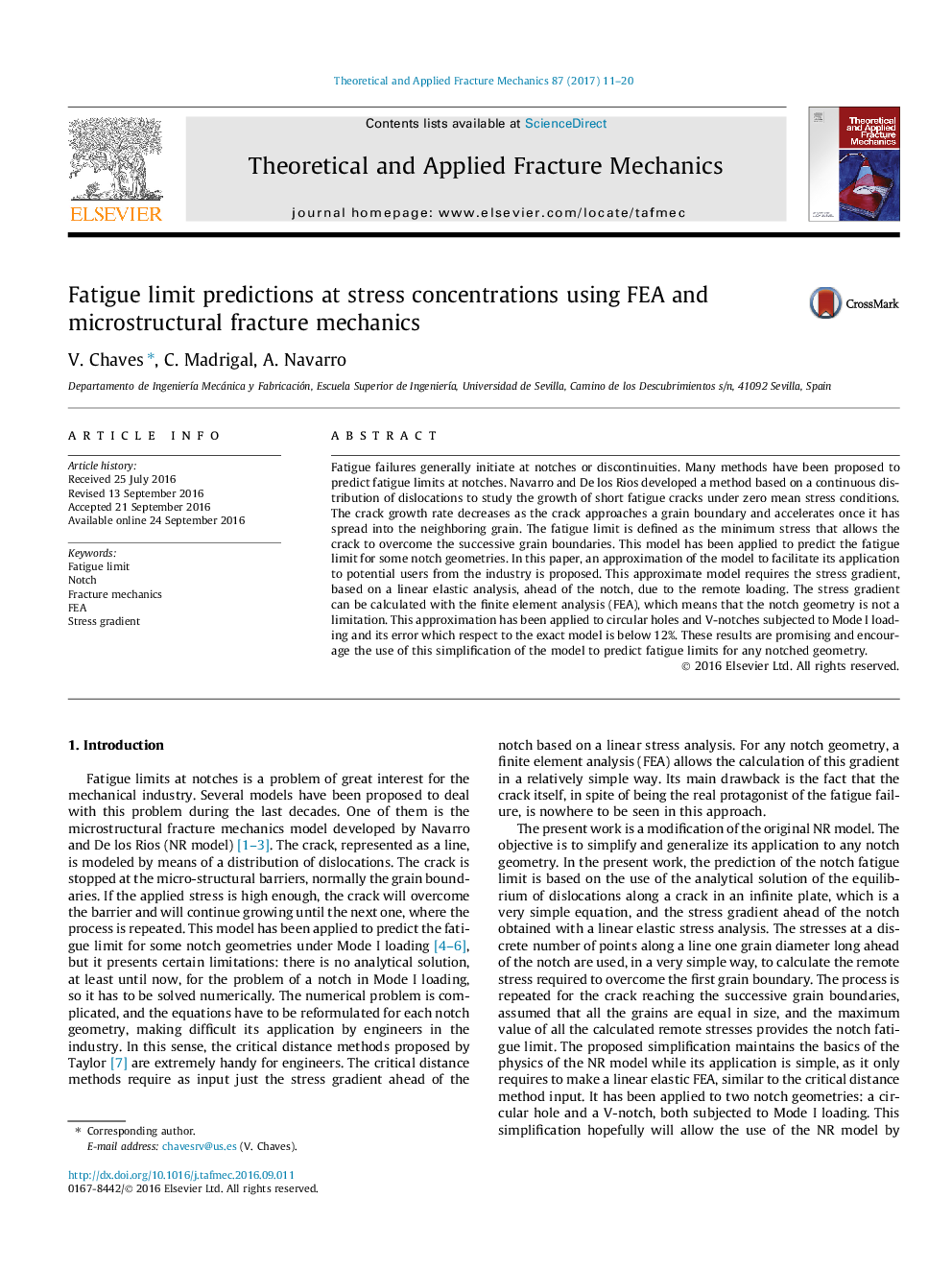| Article ID | Journal | Published Year | Pages | File Type |
|---|---|---|---|---|
| 5019863 | Theoretical and Applied Fracture Mechanics | 2017 | 10 Pages |
â¢A simplification of the NR model is proposed for notch fatigue limits.â¢It does not require any knowledge about mechanics of dislocations.â¢The input is the linear elastic stress gradient ahead of the notch, through FEA.â¢Good results were obtained for circular holes and V-notches in Mode I loading.â¢The simplification can be applied to any notch geometry.
Fatigue failures generally initiate at notches or discontinuities. Many methods have been proposed to predict fatigue limits at notches. Navarro and De los Rios developed a method based on a continuous distribution of dislocations to study the growth of short fatigue cracks under zero mean stress conditions. The crack growth rate decreases as the crack approaches a grain boundary and accelerates once it has spread into the neighboring grain. The fatigue limit is defined as the minimum stress that allows the crack to overcome the successive grain boundaries. This model has been applied to predict the fatigue limit for some notch geometries. In this paper, an approximation of the model to facilitate its application to potential users from the industry is proposed. This approximate model requires the stress gradient, based on a linear elastic analysis, ahead of the notch, due to the remote loading. The stress gradient can be calculated with the finite element analysis (FEA), which means that the notch geometry is not a limitation. This approximation has been applied to circular holes and V-notches subjected to Mode I loading and its error which respect to the exact model is below 12%. These results are promising and encourage the use of this simplification of the model to predict fatigue limits for any notched geometry.
